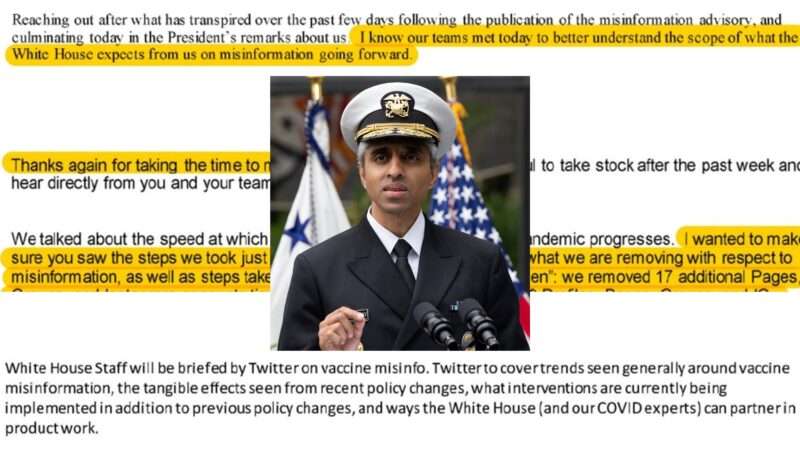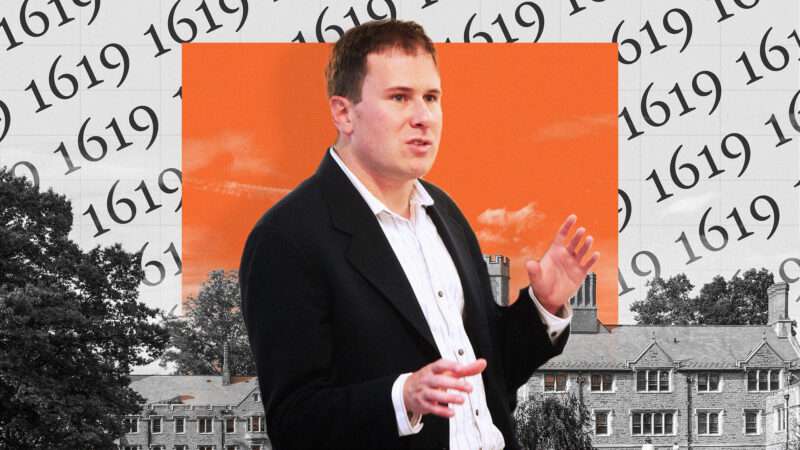From Magistrate Judge Reid Neureiter’s Report and Recommendation yesterday in Huff v. City of Aurora (D. Colo.) (the ultimate decision will be in the District Judge’s hands, though such Magistrate Judge Reports and Recommendations are generally quite influential):
This lawsuit arises from an incident that occurred on October 10, 2019 at the Aurora home Mr. Huff shared with his wife, young daughter, and brother, George. That day, a man named George Bejar-Gutierrez, whom the brothers allowed to stay at the residence, stole George Huff’s vehicle to drive to a methadone clinic. When Mr. Bejar-Gutierrez eventually returned, he was under the influence of methadone and George Huff’s car was damaged. A confrontation, initiated by Mr. Bejar-Gutierrez, ensued, which prompted a passerby to call 911. Officers Doorgeest, VanDyk, and Vaughan of the Aurora Police Department (“APD”) were dispatched to the scene, where they met with the Huff brothers, who explained what had happened. The officers informed the brothers that neither would be charged with any crime, and Andrew Huff gave them his cell phone number for any future communications.
Mr. Bejar-Gutierrez, who had fled before officers arrived and then proceeded to threaten the Huff brothers throughout that day and into the evening, eventually placed his own call to the APD, and met with Officers Ord, Marrero, and Oviatt at around 7:00 p.m. at a different Aurora residence. Mr. Bejar-Gutierrez told these officers that the Huff brothers assaulted him and that Andrew Huff had a firearm. Mr. Huff alleges that Mr. Bejar-Gutierrez was a convicted felon who had previously been arrested for giving false information to the APD.
At 11:30 p.m., Officers Ord, Marrero, and Oviatt, without any advance notice to Mr. Huff, went to Mr. Huff’s home. They parked around the corner and, wearing all black clothing, proceeded to “creep” through neighboring yards towards Mr. Huff’s residence. When Mr. Huff, who was smoking outside, saw these unidentified individuals advancing upon his home, he believed that Mr. Bejar-Gutierrez was following through on his earlier threats. He ran inside and retrieved a shotgun. He was facing the window with both hands by his side. His left hand held the shotgun by the barrel—his finger was not on the trigger and the gun was pointed at the ceiling. About 30 feet away, Officer Ord drew his weapon and, as he yelled, “Put your hands up, put your hands up!”, fired five shots at Mr. Huff. Mr. Huff, who was diving away from the window as Officer Ord opened fire, was shot in rectum and severely injured. Another round entered the room where his daughter lay sleeping.
Officer Ord attempted to justify his actions by exclaiming that Mr. Huff “came into the window with a gun,” and afterwards stated, “They are racking up in the garage,” when, in fact, Mr. Huff, bleeding profusely on the floor, was merely calling 911 for help. Mr. Huff was charged with multiple felonies, all of which were ultimately dismissed. The second is a claim for municipal liability brought against the City for its allegedly unconstitutional policies, practices, and customs.
The Magistrate Judge reasoned that Huff had adequately stated a Fourth Amendment claim:
“To state an excessive force claim under the Fourth Amendment, plaintiffs must show both that a seizure occurred and that the seizure was unreasonable.” “[A]pprehension by the use of deadly force is a seizure subject to the reasonableness requirement of the Fourth Amendment.” In assessing an excessive force claim under the Fourth Amendment, “the question is whether the officers’ actions are objectively reasonable in light of the facts and circumstances confronting them, without regard to their underlying intent or motivation.” The inquiry “requires careful attention to the facts and circumstances of each particular case.” In conducting this analysis, the Court must “consider the factors the Supreme Court clearly set forth in Graham v. Connor.” These three factors are “(1) ‘the severity of the crime at issue,’ (2) ‘whether the suspect poses an immediate threat to the safety of the officers or others,’ and (3) ‘whether [the suspect] is actively resisting arrest or attempting to evade arrest by flight.'” …
The first Graham factor, “the severity of the crime at issue,” is inconclusive at this stage.
Understandably enough, the Amended Complaint does not state what Mr. Bejar-Gutierrez told officers when he met with them on the evening of October 10, 2019, beyond, “George Bejar-Gutierrez claimed that the Huff brothers had assaulted him earlier in the day and claimed that Plaintiff had a firearm.” It is unknown whether Mr. Bejar-Gutierrez described a felonious assault, i.e., that he suffered serious bodily injury at the hands of the Huff brothers or that a deadly weapon was used. Unhelpfully, in his motion, Officer Ord argues that he and the other officers were investigating Mr. Huff for assault, “which could have been considered a felony in the state of Colorado.” Officer Ord is more definitive in his reply; he says that Mr. Bejar-Gutierrez reported a “felony assault.” This incongruity is left unexplained, but it can and should be explored in discovery.
What Mr. Huff does allege, and what the Court must accept as true, is that the officers waited four hours after the alleged assault was reported to attempt to contact Mr. Huff. Officer Ord suggests that it is reasonable for police to take the time and prepare for a safe approach of an armed suspect. While the Court does not discount this argument, the delay could equally imply that the officers did not believe that exigent circumstances existed such that their later actions—waiting until almost midnight; parking around the corner; “sneaking” through the neighbors’ yards; silently taking positions around the front of the house; all while not identifying themselves—were justified.
Moreover, what “preparations” the officers were taking during this time is relevant. Did they check the criminal records of the parties? Did they check whether Mr. Huff’s firearm was registered? Did they bother to inquire whether there were prior reports from the parties that had previously been investigated by other officers the same day? Did they see that the brothers had been cleared of wrongdoing by their fellow officers? These are issues to be developed during discovery….
The second Graham factor, “whether the suspect pos[ed] an immediate threat to the safety of the officers or others,” “is the ‘most important’ and fact intensive factor in determining the objective reasonableness of an officer’s use of force.”
“A frequent concern of the courts is the use of deadly force—that is, ‘force that the actor uses with the purpose of causing or that he knows to create a substantial risk of causing death or serious bodily harm.'” The Tenth Circuit has set forth four nonexclusive factors to consider when assessing the seriousness of a threat that precipitated an officer’s use of deadly force: “(1) whether the officers ordered the suspect to drop his weapon, and the suspect’s compliance with police commands; (2) whether any hostile motions were made with the weapon towards the officers; (3) the distance separating the officers and the suspect; and (4) the manifest intentions of the suspect.” …
The first Larsen factor goes to “whether the officers ordered the suspect to drop his weapon, and the suspect’s compliance with police commands.” Mr. Huff alleges that the officers did not identify themselves at any time prior to the shooting and that Officer Ord fired his weapon at the same time as he shouted, “Hands up!” “The Supreme Court has said that ‘deadly force may be used if necessary to prevent escape [of one who threatens an officer with a weapon], and if, where feasible, some warning has been given.‘” Taking the allegations of the Amended Complaint as true, Mr. Huff was never informed that he was dealing with police officers, much less that deadly forced might be used. Given that “the failure to warn when feasible and without excuse is so fundamental that it is often dispositive,” this factor weighs in favor of Mr. Huff.
The second Larsen asks “whether any hostile motions were made with the weapon towards the officers,” and likewise weighs in favor of Mr. Huff. According to the Amended Complaint, Mr. Huff did not point his weapon at anyone; he held the shotgun by its barrel and it was pointed at the ceiling. Nor did he ever fire the weapon. Officer Ord argues that “Plaintiff’s appearance at the front window with a shotgun in his hand was, by itself, hostile in nature.” But given that there is no “per se rule of objective reasonableness where a person points a gun at a police officer,” the mere possession of a weapon does not, by itself, justify the use of deadly force. Possession of a firearm in one’s home is also a constitutionally protected right and is not unlawful absent some disqualifying characteristic, such as being a felon.
The third Larsen factor, “the distance separating the officers and the suspect,” supports Officer Ord. Though Officer Ord allegedly fired from some 30 feet away, Mr. Huff was apparently much closer to the officer knocking on the door, which intensifies the immediacy of danger, although the exact layout the property is unknown at this time.
The fourth Larsen factor, “the manifest intentions of the suspect,” weighs in favor of Mr. Huff. Under the circumstances described in the Amended Complaint, Mr. Huff’s “manifest intentions” were not to harm officers but to protect himself and his family from someone who had physically confronted him earlier that day and then made threats return to the property. Mr. Huff had no reason to believe he would be contacted by police officers given his earlier cooperation. And Officer Ord and his fellow officers’ failure to identify themselves and their “covert” approach to the home served to reinforce Mr. Huff’s belief that he was in danger. Under this version of events, “it was no surprise” that Mr. Huff armed himself “because it was [his] constitutional right to do so.”
On balance, then, … [t]he Amended Complaint plausibly alleges that it was unreasonable for Officer Ord to believe that Mr. Huff posed a grave threat of danger to himself or anyone else. Officer Ord is free to raise this “fact intensive” issue again on summary judgment, after discovery….
The third Graham factor, “whether [the suspect] is actively resisting arrest or attempting to evade arrest by flight,” weighs of favor of Mr. Huff. According to Mr. Huff, he had fully cooperated with APD officers that very day, going so far as to give them his cell phone number in case they had follow up questions. When Officer Ord and the other officers arrived at Mr. Huff’s house, they did not tell Mr. Huff that they were police officers or that Mr. Huff was being arrested. Mr. Huff “couldn’t have been resisting an arrest if he hadn’t even been told that he was being arrested.” …
The Magistrate Judge also reasoned that the officer wasn’t entitled to have the case dismissed under qualified immunity, because, if the facts are as Mr. Huff alleges, the officer’s actions were clearly unconstitutional:
The Court agrees with Mr. Huff that the Tenth Circuit’s opinion in Pauly v. White put Officer Ord on notice that shooting into Mr. Huff’s and hitting Mr. Huff violated the Constitution. In Pauly, Samuel Pauly was shot through the window of his home by Officer White, a state police officer who was investigating an earlier road rage incident involving Samuel’s brother, Daniel Pauly. Three officers, including Officer White, arrived at the house after 11:00 p.m. in the month of October. The officers approached and surrounded the residence without activating their security lights, which “confused and terrified” the brothers, who feared they could be intruders related to Daniel’s prior road rage altercation. The officers told the brothers to come outside but did not clearly identify themselves.
Samuel armed himself with a loaded handgun and gave Daniel a shotgun and ammunition. One of the brothers shouted, “We have guns,” and Daniel fired two warning shots out of the back door. Samuel opened the front window and pointed a handgun at Officer White, who then fired from behind a stone wall 50 feet away….
Officer Ord argues that Pauly is distinguishable in several ways, the most important distinction being that he gave Mr. Huff a warning to put his hands up. However, as noted above, the Amended Complaint alleges that the warning came as Officer Ord started shooting. If true, this effectively means that no warning was given at all.
Officer Ord also points out that “the plaintiffs in Pauly did not flee approaching officers.” But, like the Pauly brothers, Mr. Huff did not know, and had no reason to know, that the people approaching his house were law enforcement officers. Instead, both Mr. Huff and the Pauly brothers feared intruders, and Mr. Huff’s fear was rational given the threats he received from Mr. Bejar-Gutierrez earlier that day.
Officer Ord also states the Pauly shooting occurred in a rural, rather than urban, setting, and the “confrontation between the brothers and officers lasted for a “significant amount of time” before Samuel Pauly was shot. Neither argument is persuasive. It appears that only 3-4 minutes had elapsed from the time that Officer White arrived at the Pauly residence and the final shot was fired. This is hardly a “significant amount of time,” especially considering that the Court has nothing to compare it to here, temporally speaking; the Amended Complaint only alleges that “Officer Ord started shooting at Plaintiff approximately two seconds after seeing him standing non-threateningly in his window.” Moreover, whether urban or rural, both cases involved individuals who were shot while standing back-lit in their front windows….
And the Magistrate Judge also concluded that municipal liability was possible here, because Huff “has sufficiently alleged that the City failed to train Officer Ord in the use of appropriate force when confronted with individuals exercising their Second Amendment right to keep bear arms in their homes, and that the City’s final policymakers ratified Officer Ord’s allegedly unconstitutional use of deadly force”:
Mr. Huff alleges here that “[n]ot only does Aurora have absolutely no training on shooting into residences or encounters with homeowners exercising Second Amendments rights, but it has also almost zero training on avoiding unnecessary escalation, and deficient training on proportional constitutional use of force.” If true, this demonstrates the APD’s deliberate indifference to its citizens’ constitutional rights, especially given how many American homeowners—exercising their well-established Second Amendment rights—legally own and possess firearms. Accordingly, at this early stage, Mr. Huff’s Amended Complaint plausibly states a claim against the City under a failure to train theory….
According to Mr. Huff, APD Chief Paul O’Keefe publicly supported Officer Ord after the shooting, stating that Officer Ord complied with APD policy and did nothing wrong. Mr. Huff further notes that former APD Chief Nick Metz publicly backed the officers who shot and killed Mr. Black in 2018. No officers were disciplined in either case. Mr. Huff argues that this amounts to ratification and is evidence of the APD’s unconstitutional policy of shooting at homeowners lawfully exercising their Second Amendment rights….
Chief O’Keefe’s failure to discipline Officer Ord after shooting Mr. Huff cannot, on its own, plausibly form the basis of municipal liability on a ratification theory. However, … “[a] failure to investigate or reprimand might also cause a future violation by sending a message to officers that such behavior is tolerated.” That is what Mr. Huff alleges here. He claims that after police shot and killed Mr. Black in his home, then-Chief Metz publicly stated the officers did nothing wrong and none of them were disciplined. Then, Chief O’Keefe, after “carefully review[ing] and analyz[ing] Officer Ord’s decision to shoot Plaintiff,” under circumstances similar to those that resulted in Mr. Black’s death, likewise determined that the officer’s actions were in line with APD policy. If the City’s final policymakers took affirmative steps to not merely condone but also commend the allegedly excessive and unconstitutional use of deadly force by APD officers, this deliberate conduct may be enough to establish the existence of an official informal policy, whatever the formal written policy may provide….
The post "Mr. Huff Alleges That the Officers Did Not Identify Themselves at Any Time Prior to The Shooting … appeared first on Reason.com.
from Latest https://ift.tt/1gSXqtR
via IFTTT







